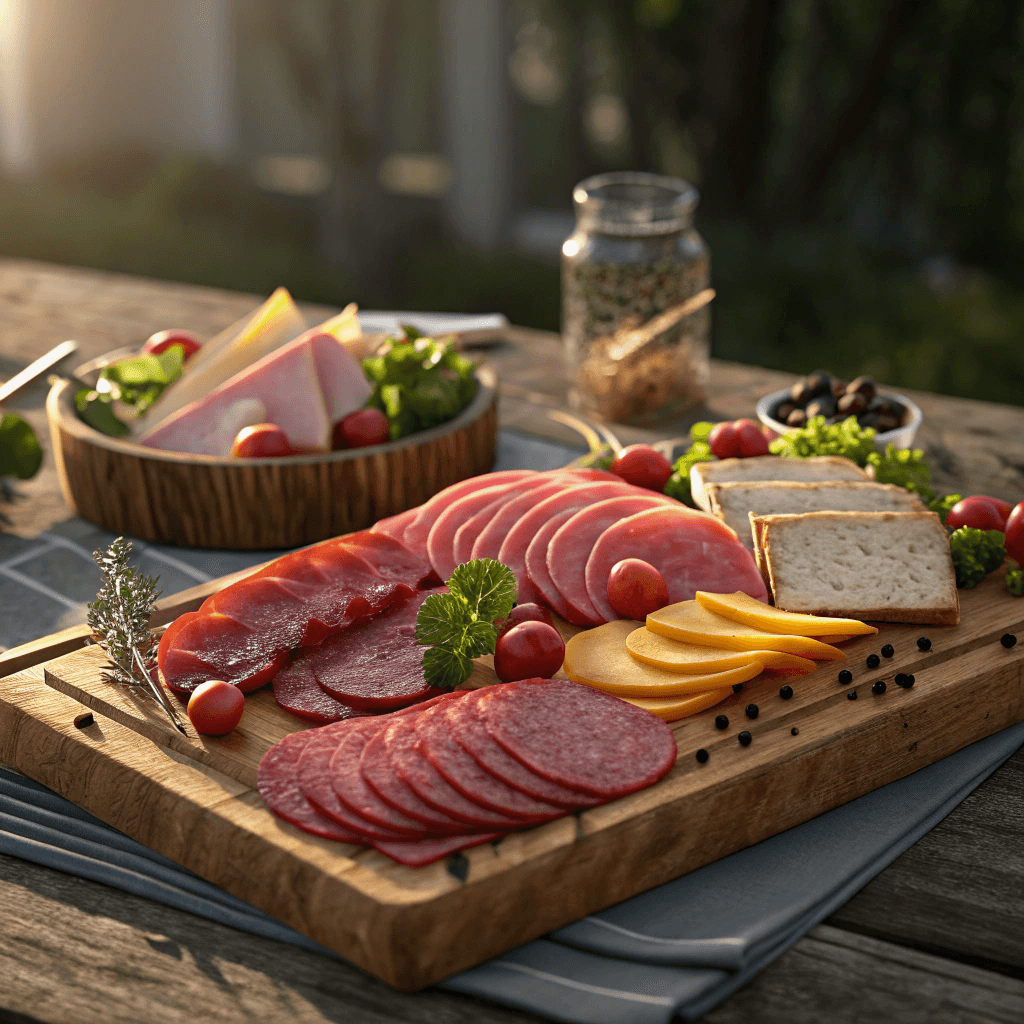Meats for lunch, also called deli meats cold cuts, cold cuts, or sandwiches, are a popular staple in many homes around the globe. The versatile meats are cooked or preserved, making the convenience of making easy, tasty dishes. However, what type of meat is considered to be lunch and what is the meat, and why is it a favorite choice? This article will solve these issues while providing details on the different varieties of meat is lunch meat as well as their preparation and how you can maximize the use of these in the kitchen. If you’re a food lover or seeking quick and easy meal recipes, this informative guide will become your primary source.
Table of Contents
What Is Meat is lunch meat?
Lunch meat is an assortment of prepared meats made for ease of use. They can be consumed right out of the box or used in a variety varieties of both hot and cold meals. They are admired because of their longevity and diverse tastes and capacity to spice up even simple meals with abundant flavor and delicious notes.
Characteristics of Lunch Meat:
- Cured or cooked Manymeat is lunch meat go through curing, smoking, or cooking processes to enhance taste and preservation.
- thinly cut The most common way to purchase it is in thin slices to make it easy for layers in wraps or sandwiches.
- Varieties of Flavors The options range from light turkey and chicken, to spicy salami and pepperoni.
The lunch meats vary in the variety they offer, so you can find something that will please everyone. When you understand the different types it is possible to make more informed selections that meet your nutritional requirements and your preferences for taste.
Find our entire guide to meals with meat on this page: Lunch Meat Guide .
Ingredients for Crafting Lunch Meat-Based Meals
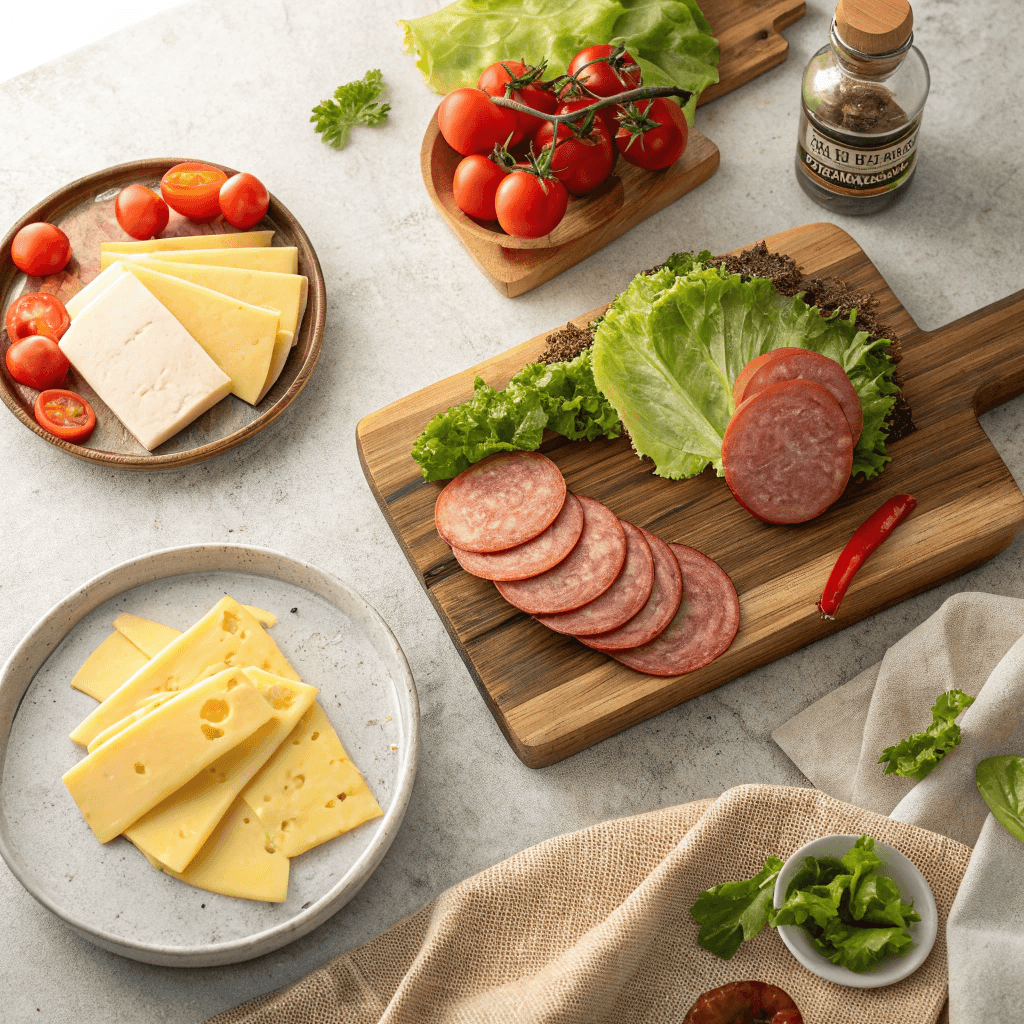
For a truly memorable meal for lunch it is more than just the animal in itself. The right ingredients can enhance your food by turning sandwiches and wraps into gourmet masterpieces. When making a choice, think about the balance between freshness, freshness and the compatibility.
Essential Ingredients:
- A variety of Lunch Meats You can include choices like turkey, ham salami, mortadella (200g of each, for the variety and the ability to be flexible).
- cheeses: Swiss, cheddar provolone, mozzarella, or Swiss (approximately 100g each, to add creaminess).
- Fresh vegetables Crisp lettuce, succulent tomatoes, red onions cucumbers and tart pickles.
- Wraps or Bread Bread made of whole grain, pita, sourdough, or wraps made of tortillas (enough to make 4-6 servings).
- Condiments and Sauces A few options include mayonnaise and mustard, pesto or a sweet chipotle spread.
- Spices and Herbs Use salt pepper, oregano and even dill to give it an aroma-enhancing flavor.
If you prepare these ingredients ahead of time it will ensure that the assembly is smooth and amazing flavour combinations.
How to Prepare a Perfect Lunch Meat Sandwich

Sandwiches have been identified as the principal use. But, making the best sandwich is more than just the stacking of ingredients. It’s a matter of balance between tastes and the textures.
Step 1: Gather Fresh Ingredients
Before beginning, spread out the ingredients. Cut up your vegetables and meats as needed. Toasting your wraps and bread slightly can give them flavor and increase the taste.
- Bread Preparation: Select your bread or wrap based on the meal’s theme (e.g., sourdough for hearty sandwiches, pita for Mediterranean-inspired wraps).
- Applicable to condiments: Apply thin layers of the desired condiment in an even layer on every slice or over the wrap’s the wrap’s surface.
- Layering meats and Cheeses Start with a few slices of turkey salami or ham, then add cheese to create the perfect creamy addition.
Step 2: Add Vegetables and Seasonings
Include vegetables such as lettuce and tomato to ensure that you have a uniform coverage of each bite. Sprinkle lightly with herbs or spices to add a touch of flavor.
- Lay out layers thoughtfully Begin with hard items such as cucumber slices and finish with soft items like lettuce for the structure.
- Season well Add a dash of salt, pepper oregano, to enhance the natural flavors.
Step 3: Assemble and Serve
Then press the sandwich lightly to secure the layers. Cut it diagonally to display, and serve it with chips, salad or a fresh fruits.
Exploring Hot Dishes Featuring Lunch Meat
Though meat is lunch meat are usually considered to be cold foods Their versatility is extended to hot dishes. By incorporating them into cooking recipes, you allows you to discover flavours and different textures to enhance your cooking repertoire.
Breakfast Options
Lunch meats are great for breakfast recipes. Ham or turkey cut into pieces will enhance frittatas, omelets or breakfast burritos. In addition, adding salami to toast, with eggs on top, can give a the perfect gourmet flavor.
Warm Sandwich Ideas
Grill slices of pastrami or mortadella on a grill to add a spicy and delicious flavorful addition. Sprinkle on melty cheese and serve it on a toasty bun to make a delicious lunch.
Pasta Enhancements
The addition of sliced salami or turkey to pasta dishes, such as carbonara, casseroles or other pasta dishes adds proteins and the flavour.
Casseroles and Bakes
Place turkey or ham on lasagna sheets or inside an incredibly creamy casserole to create filling, delicious dinner. Combine these delicious dishes with fresh salads to offset the heft.
If you’re in search of an innovative way to make use of leftover meals, make sure to test this recipe. Carnitas Breakfast Recipe for Eggs with Carnitas .
The Nutritional Perspective of Lunch Meat
It is crucial to take into consideration the nutritional content of your meat. Meats for lunch vary in their caloric contents and sodium levels and the amount of protein. Although some are healthy and healthy, other options may include additives, preservatives and ingredients that require moderation.
Lean Options
Turkey and chicken breasts can be excellent options for people who are looking for protein-rich, low-fat alternatives. Selecting Nitrate-free and low sodium versions can improve their health benefits.
Indulgent Choices
Salami and bologna, though tasty, are usually more fat-laden and sodium. Infrequently eating these types of meats and smaller portions may assist in maintaining a balanced food plan.
Balance between eating pleasure and healthy eating lets you have the very best of both options. Combining meat is lunch meat and whole cereals and fresh vegetables will ensure that your food that is delicious and healthy.
Tips for Storing and Using Lunch Meat Efficiently
A proper method of storage and processing of your meat is lunch meat is essential to preserve their taste and the safety of your family. Follow these steps to ensure the freshness of your food and delicious.
Storage Guidelines:
- Refrigeration Do not store the lunch meat in temperatures less than 40 degrees Fahrenheit (4degC).
- Proper wrapping Wrap tightly in an airtight plastic wrap to stop water loss.
- Freezing for long-term storage you can freeze portions and use within two months.
Handling Tips:
- Make sure to use clean dishes when making lunch food preparations in order to prevent cross-contamination.
- Consume the packages that have been opened within 3 to 5 days to ensure optimal flavor and security.
Implementing these habits not just increases the shelf life of the meat is lunch meat you buy, but will also improve the quality of your food.
Expanding Your Culinary Horizons
Its variety makes meat is lunch meat an ideal ingredient to experiment with within the kitchen. If you are aware of the kind of meat that is considered to be lunch meat and how to use it, you can integrate it into classic and creative recipes. From breakfast wraps, to exquisite sandwiches and rich pasta dishes there are infinite possibilities.
To get more ideas, look through our Lunch Meat Guide and learn how you can turn simple ingredients into delicious dishes.
In determining what type of meat constitutes meat is lunch meat is vital to consider how these versatile ingredients can transform into tasty delights. In the last section we looked at how to make the ideal sandwich. However, in this section, we’ll dig deeper into other preparation techniques and methods of plating.
Step 4: Cooking the Perfect Hot Dish
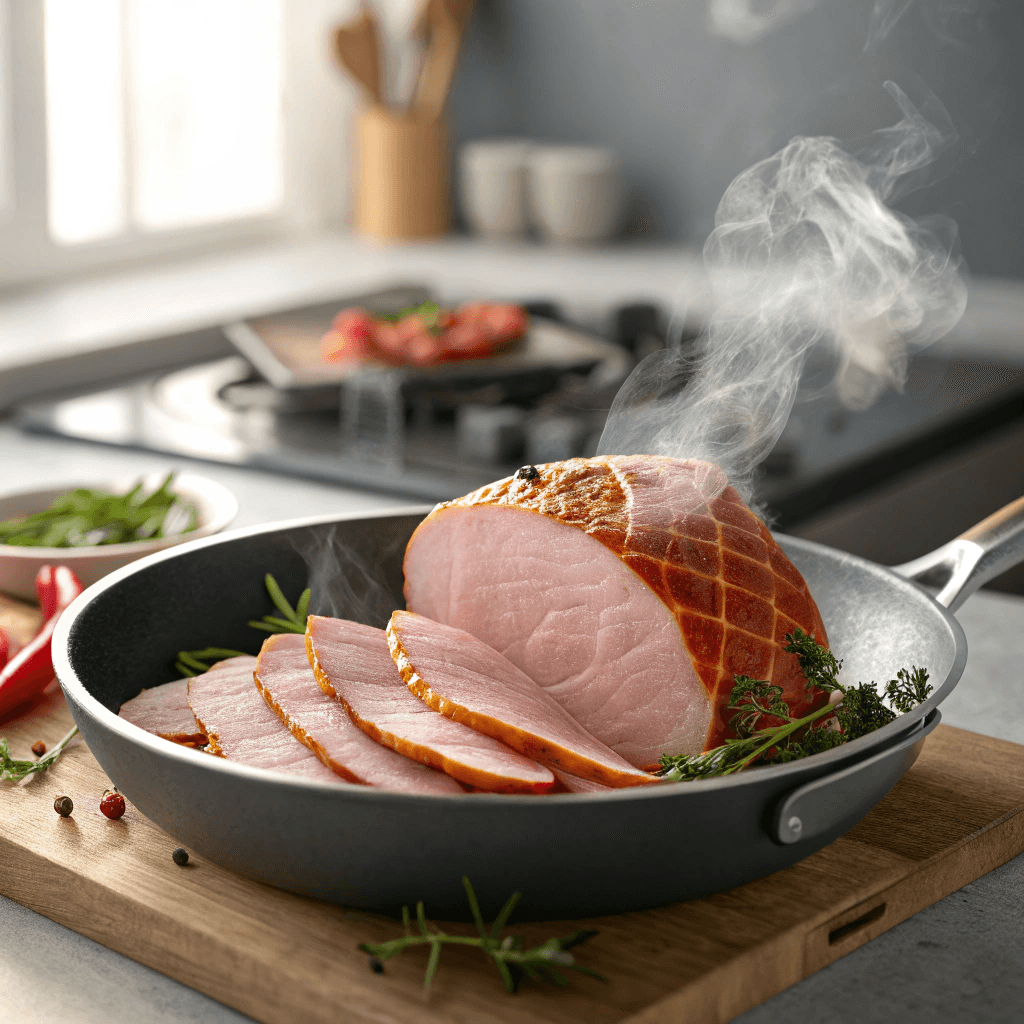
While meat is lunch meat is usually linked with cold meals, its real potential is evident when it’s used as a hot dish. Making the hot lunch meat recipe doesn’t just unlocks the rich flavor, as well as allows for imaginative plate-making.
- Heating the meat Begin by warming the skillet to medium-high heat. Include a tiny amount of butter or olive oil for an oily sear. Slice thinly of salami, ham or turkey onto the pan. The slices should get a little brown for a more smokey taste.
- The addition of additional ingredients When the beef is cooked, mix in fresh vegetables such as onions, peppers or zucchini. These components will give an intense crunch to the food.
- Layering and Simmering Layer layers of cheese over top of the cooked meat while letting it melt slowly. The skillet should be covered for a couple of minutes so that all the flavors blend perfectly.
- The garnish of the Dish Be sure to finish by garnishing the dish with fresh herbs like basil, parsley or the dill. An application of balsamic sauce or even a few chili flakes could make the dish more culinary heights.
Step 5: Plating and Serving
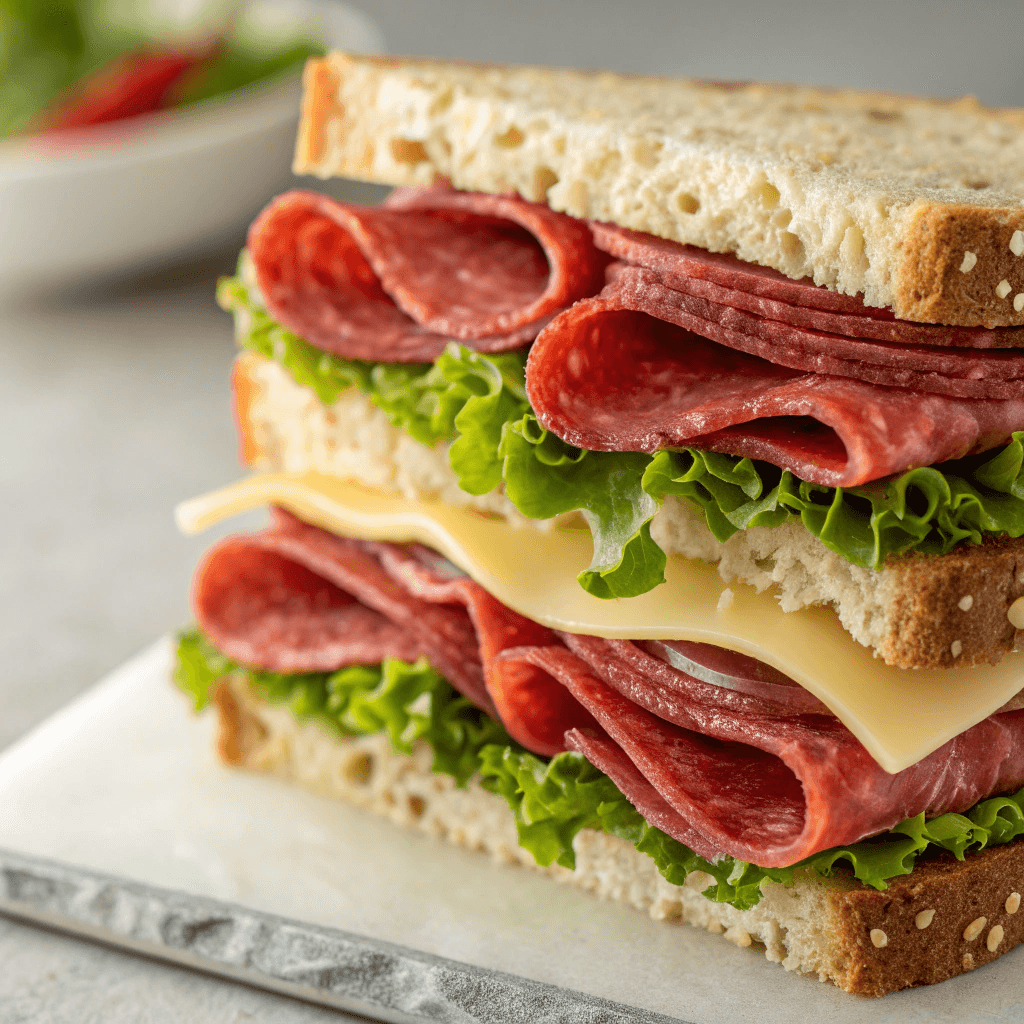
After that, food presentation becomes equally important as the cooking. An attractively presented dish improves your dining experience. For this to happen:
- The focus is on symmetry The best way to arrange food items and vegetables in a neat manner on a large platter. To serve wraps or sandwiches, slice them into equal pieces and put them in a straight line for a neat appearance.
- Create Contrasting colors Choose cherries, greens, or edible flowers to make your plate more visually attractive.
- Make sure you have a balanced portion Serving alongside crisp chips, roast potatoes and a salad for a balanced dinner.
In the end, this will ensure that the food you choose to eat is delicious and visually attractive.
Pro Tips & Creative Variations
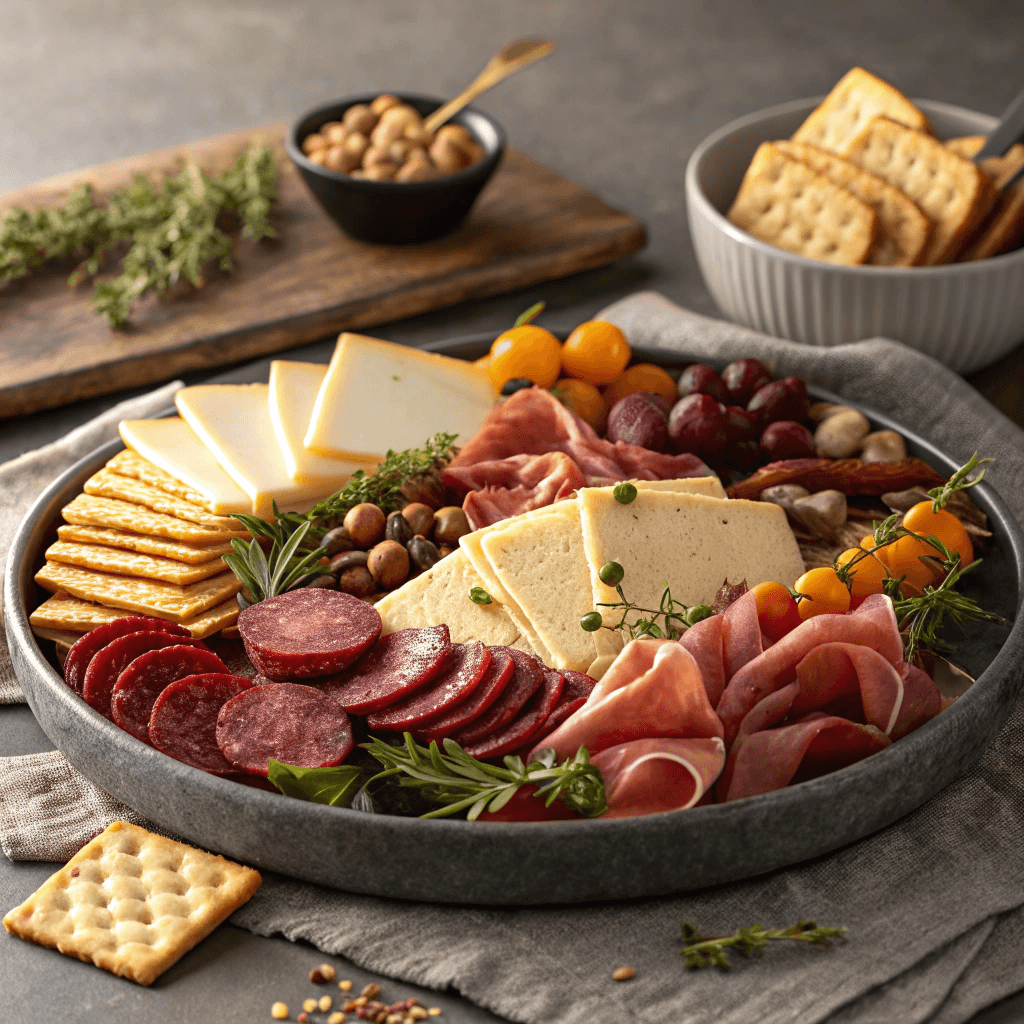
In asking what type of meat is lunch meat is available It is important to note that flexibility is the key. If you’re trying out new flavors or modifying recipes to suit your preferences for diet The possibilities are infinite.
Advanced Tips for Using Lunch Meat
- Pick the Best Bread Combinations Whole grain breads go very well with poultry or turkey Brioche or ciabatta improves the richness of meats such as Pastrami and salami.
- Try experimenting with cheese Varieties Sharp cheddar is a great complement to milder meats. While creamy gouda and brie are able to add rich textures to dishes.
- Utilize Spices strategically: Cumin, paprika or coriander could make even the most basic recipes into delicious culinary masterpieces.
Creative Variations
- Vegetarian-friendly options Alternative to typical lunch meats for plants-based options. Like smoked tofu or seitan slices can mimic the taste of ham and turkey.
- Gluten-Free adaptations Make use of lettuce wraps and gluten-free tortillas to meet food preferences without degrading taste.
- Cultural twists: Take international influence into. For example, add tzatziki and feta cheese for a Mediterranean-inspired meat is lunch meat wrap.
These modifications not only accommodate different preferences, but they also let you find completely new flavors.
Answering Common Questions About Lunch Meat
Meat from lunch often stokes interest, especially due to its variety and its role in different cuisines. Below are the answers to commonly inquired questions regarding what kind of lunch meat it is and the related issues:
What is Lunch Meat Considered?
Lunch meat is thought of as to be a kind of cooked or cured meat. It is usually cut thinly for ease of use. They are great for salads, sandwiches or for snacks. Additionally, they have salami that has been cured as well as smoked versions like pastrami and roast varieties like turkey breast.
What Are the Examples of Lunch Meat?
The types of meat you can eat for lunch include an a wide range of choices:
- Cured Meats: Salami, prosciutto, and pepperoni.
- roasted meats: Turkey breast, breast of chicken, and roast beef.
- Processed Meats: Bologna, mortadella, and loaf-style options.Additionally, specialty meats like capicola or corned beef are popular in deli counters globally.
What is the Most Popular Lunch Meat?
Turkey breast is certainly one of the most sought-after options due to its slim appearance, moderate flavor and the versatility. Ham and salami are also appreciated due to their rich flavor and the compatibility of different dishes.
Is Pepperoni a Lunch Meat?
Pepperoni can be considered as a meat for lunch, even though it’s often thought of as pizza. The bold and spicy taste is a great choice to wraps, sandwiches, and platters of charcuterie.
Benefits of Including Lunch Meat in Your Diet
If you choose it with care If it is chosen with care, the lunch meat has numerous benefits.
- The convenience Cooked in advance and cut options are time-saving.
- Protein Source Many meats for lunch have a substantial protein level, assisting in maintaining muscle and the energy level.
- Multi-purpose Use it in wraps, sandwiches, or in salads, these cuts of meat can be adapted to numerous recipes.
But, opting for the nitrate-free and low-sodium products will ensure that you get these advantages without risking your health.
Conclusion
Lunch meats can be far more than sandwich fillers. They open up unlimited culinary possibilities that range from innovative wraps to delicious food items. Knowing what is considered lunch meat lets you to discover its maximum potential while also not losing taste.
Following the advice and recipes in this post Now you’re equipped to turn everyday dinners into unforgettable experience. If you’re looking for more inspiration, take a look at our Beef Pepperoni Guide and explore the delicious world of meats for lunch.
